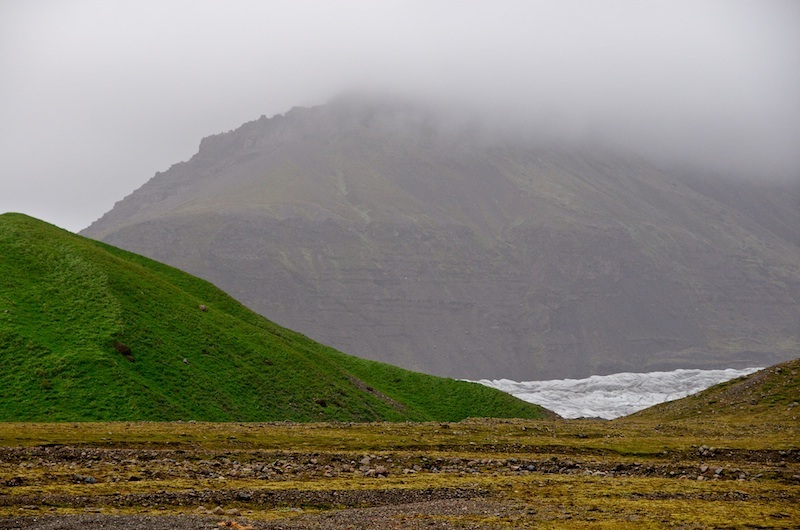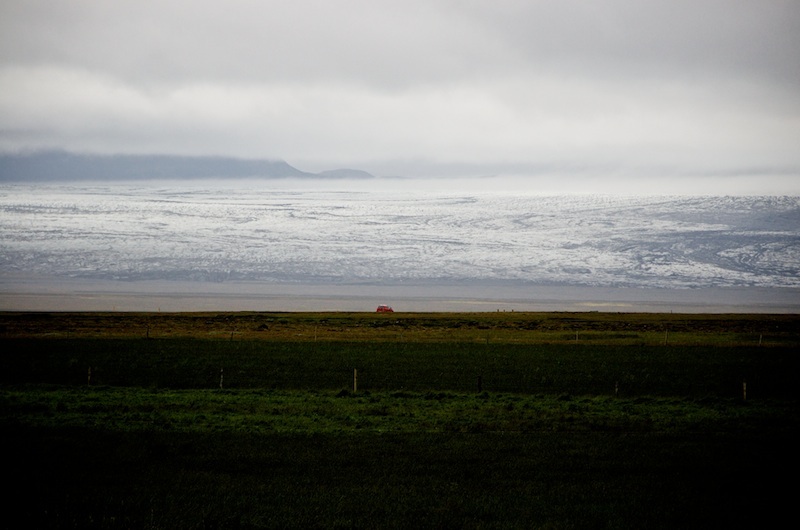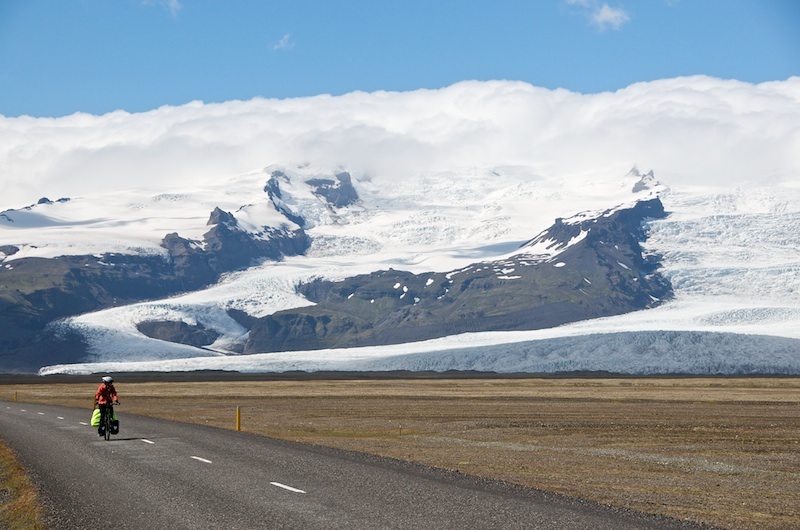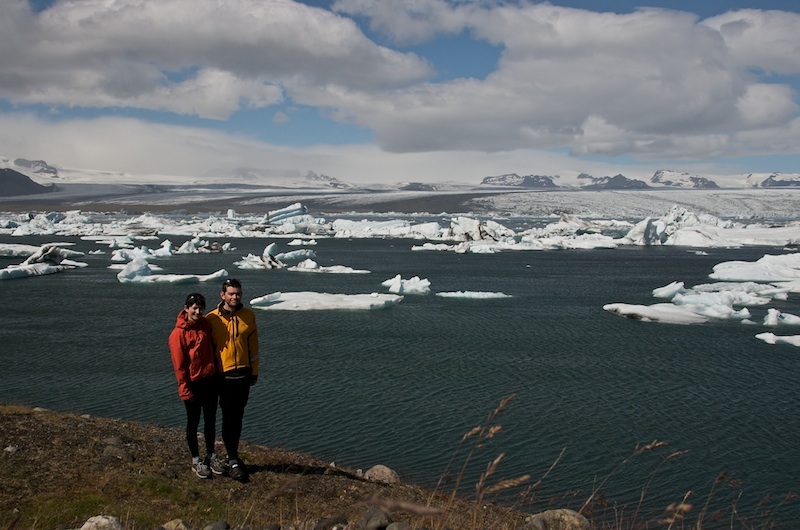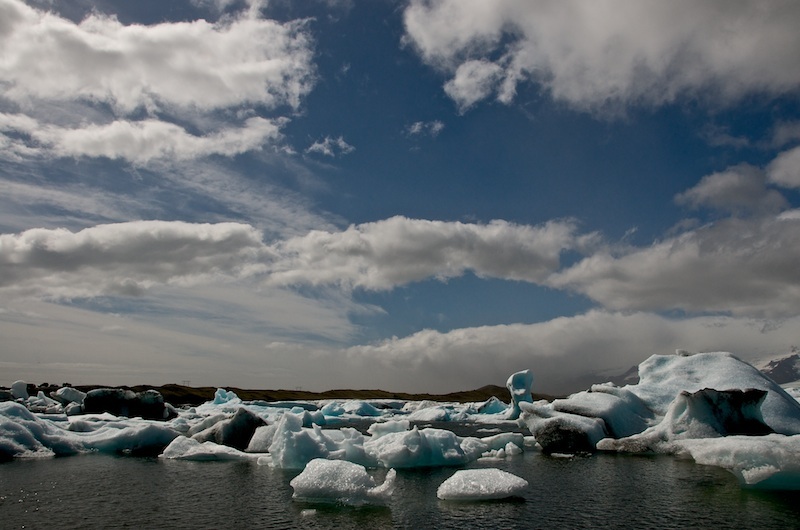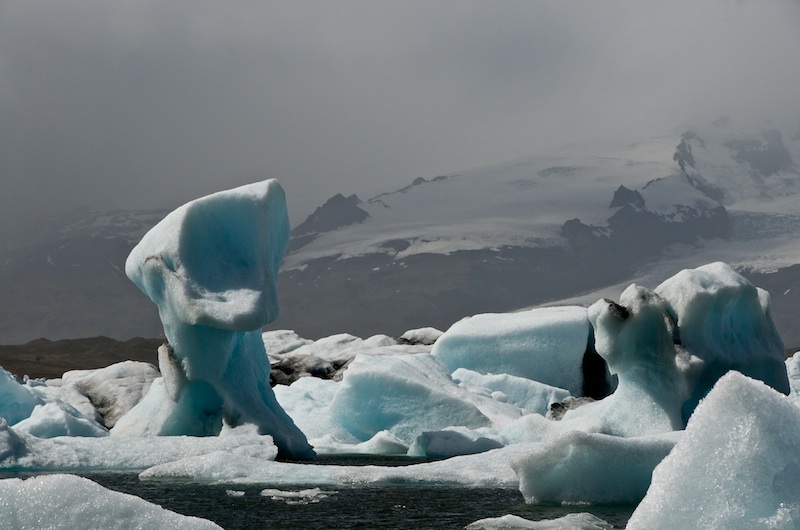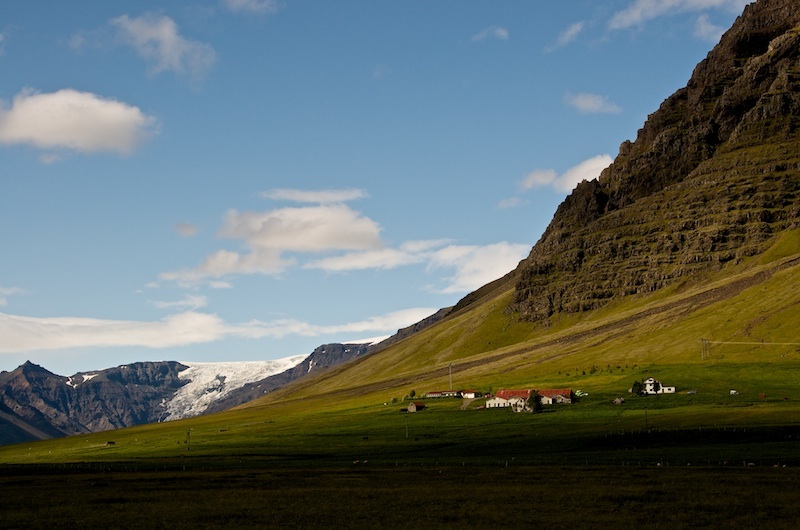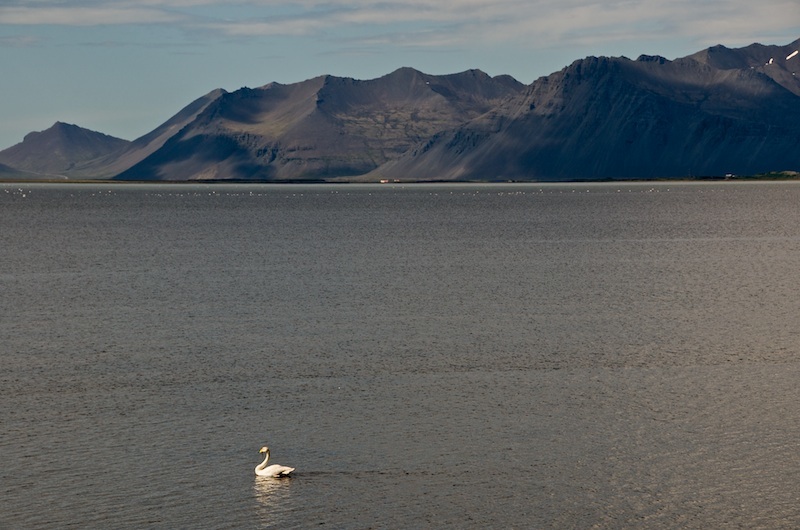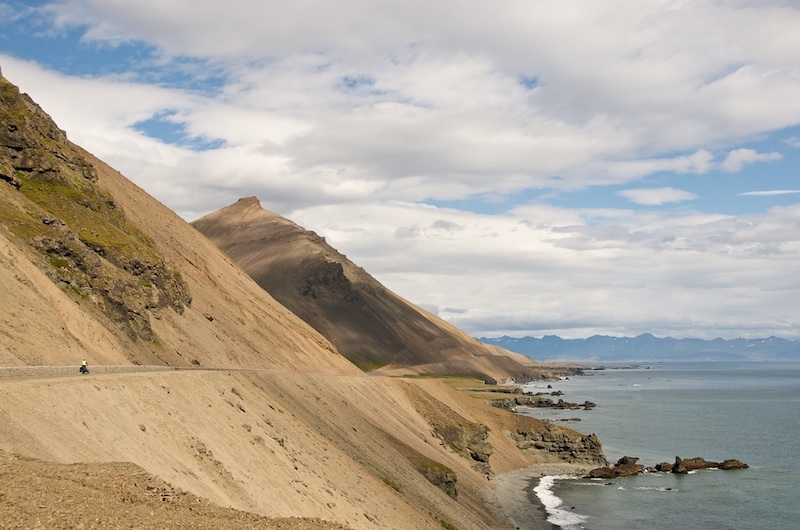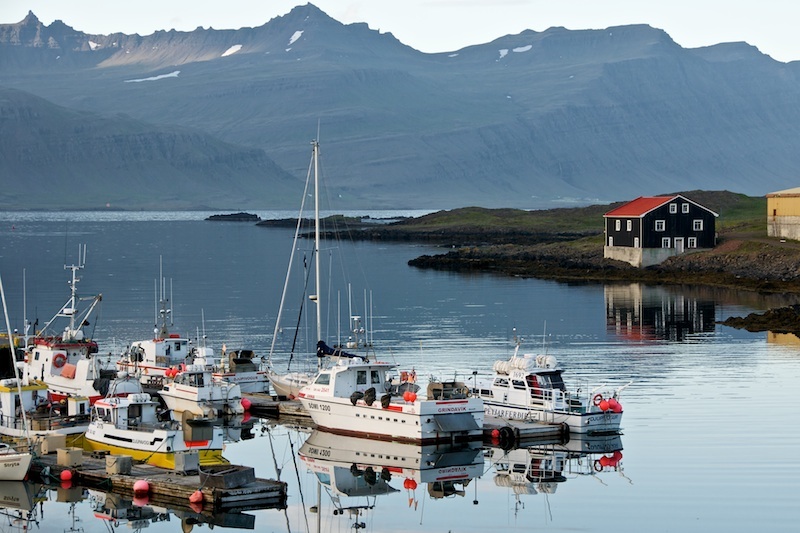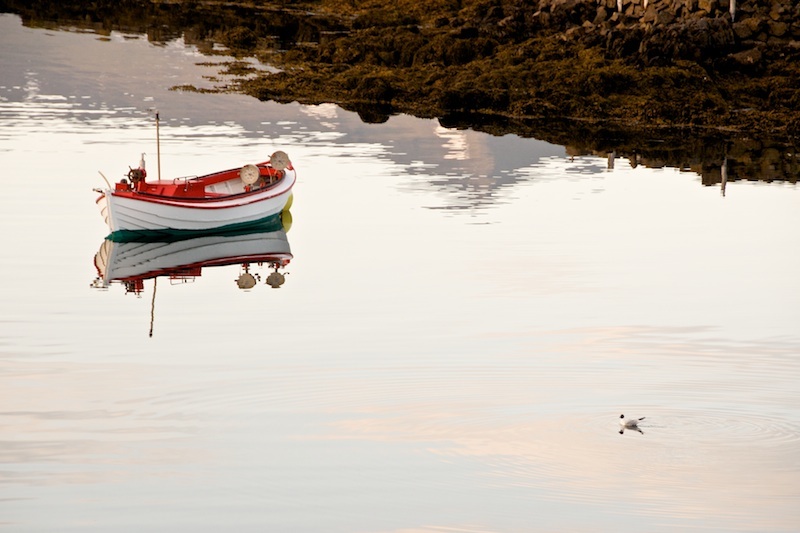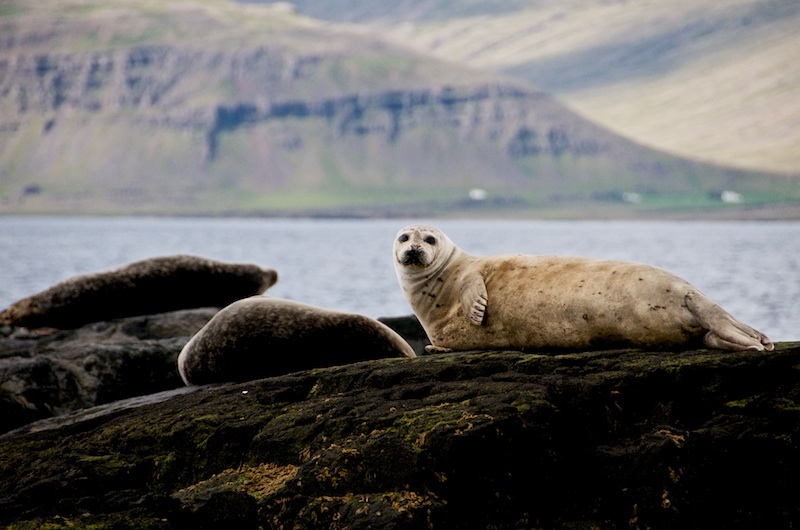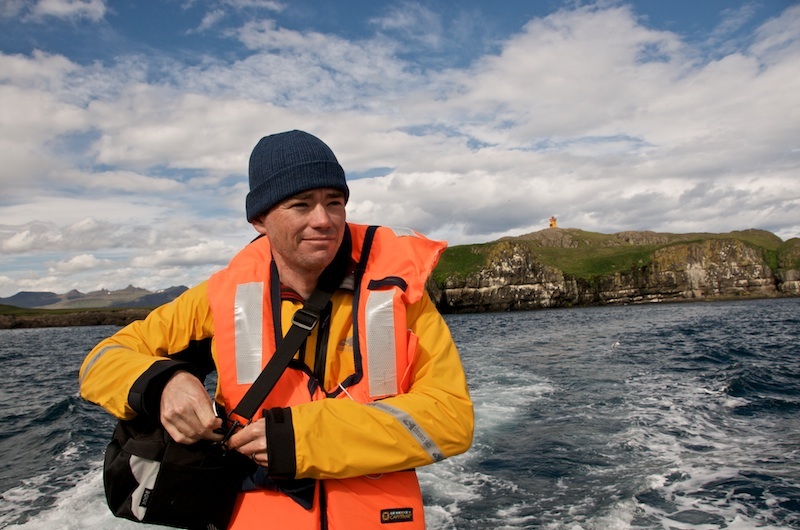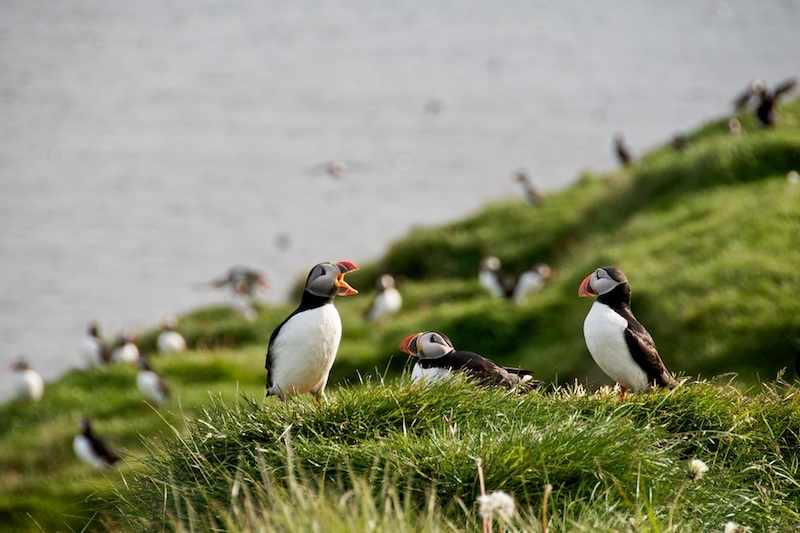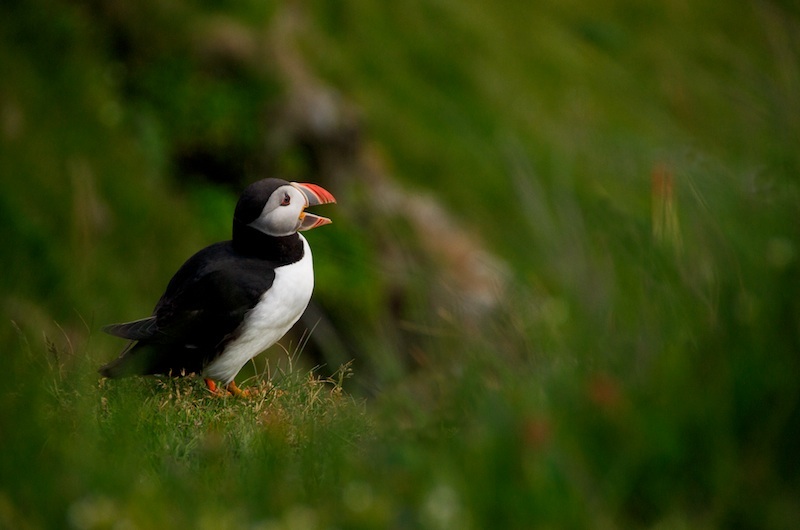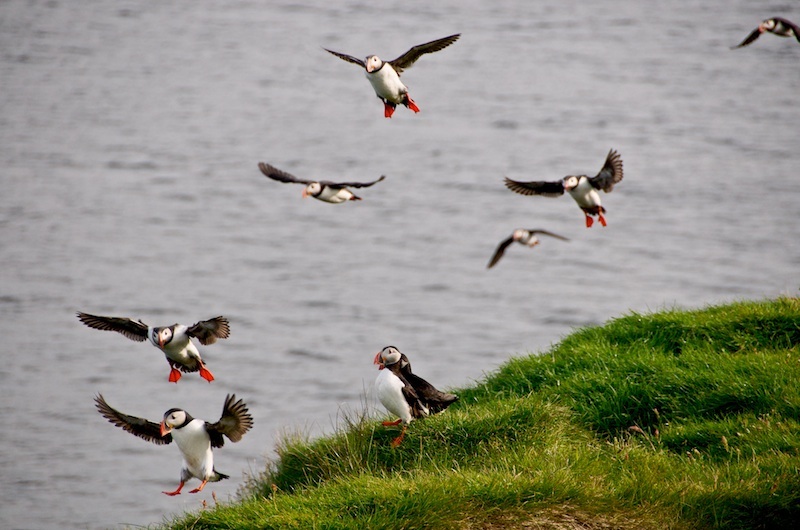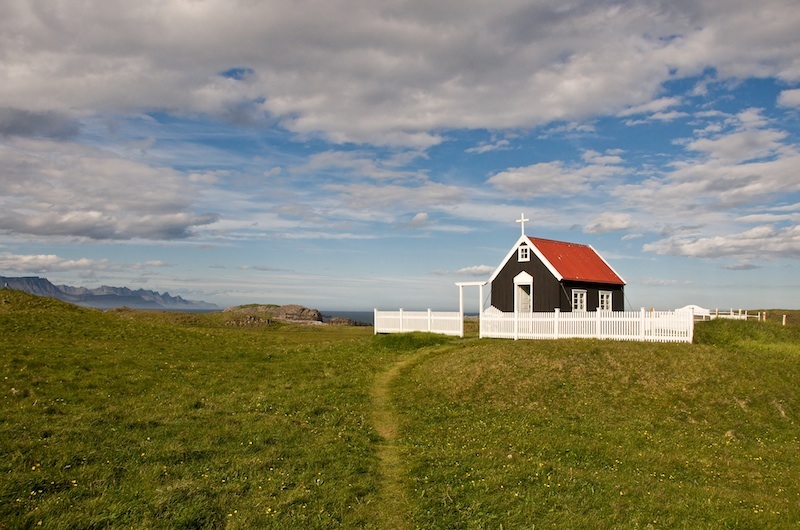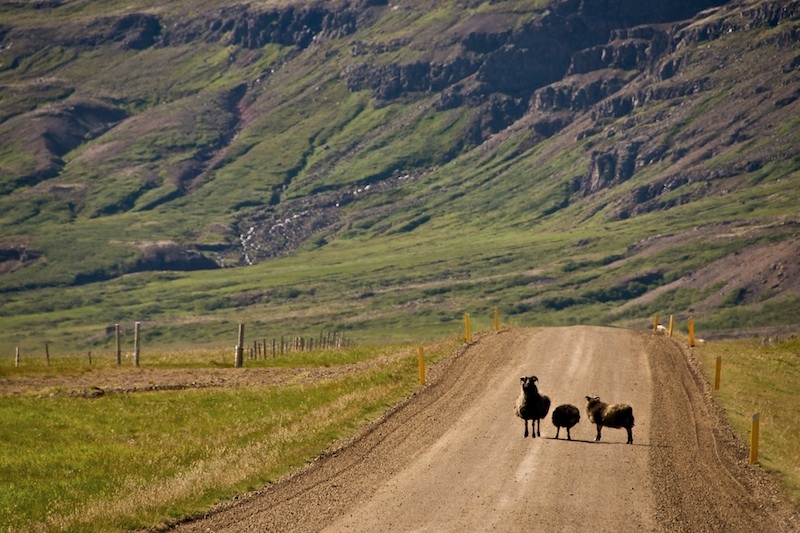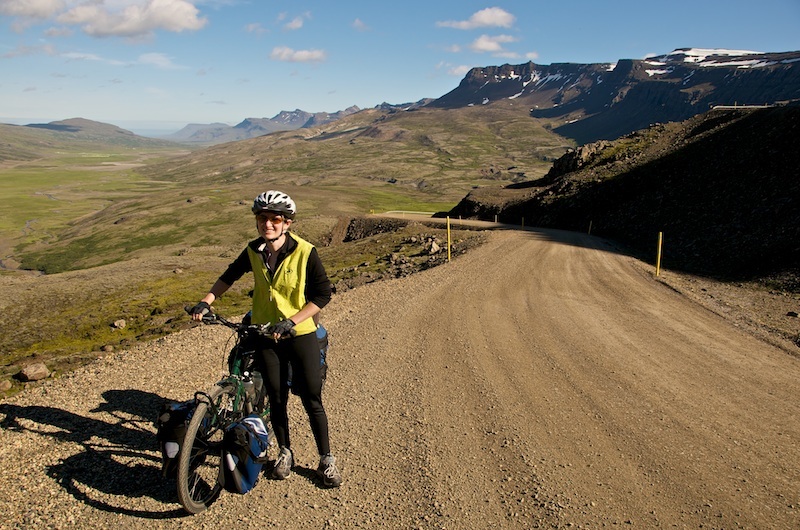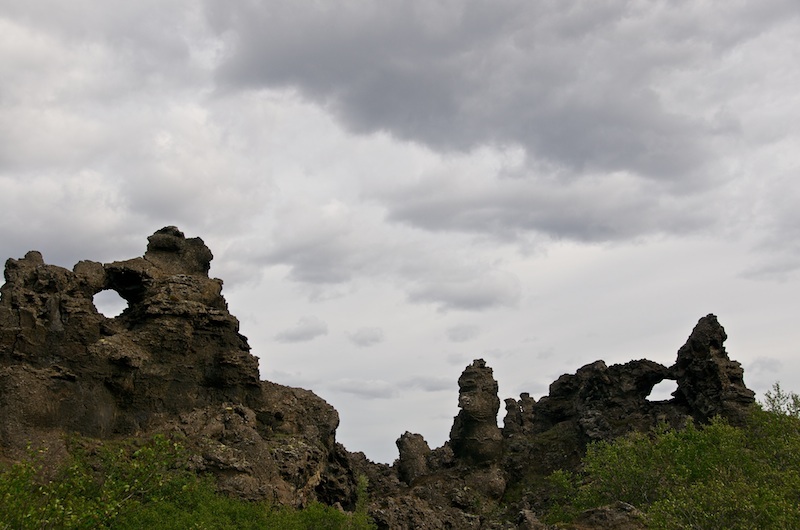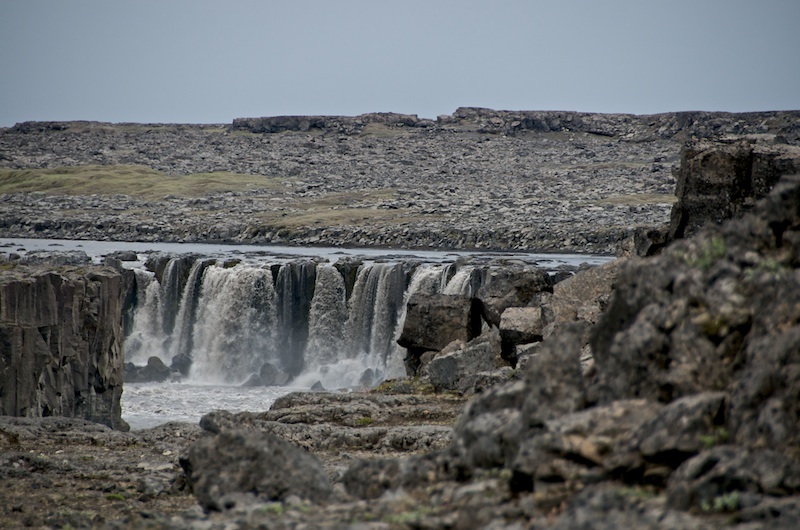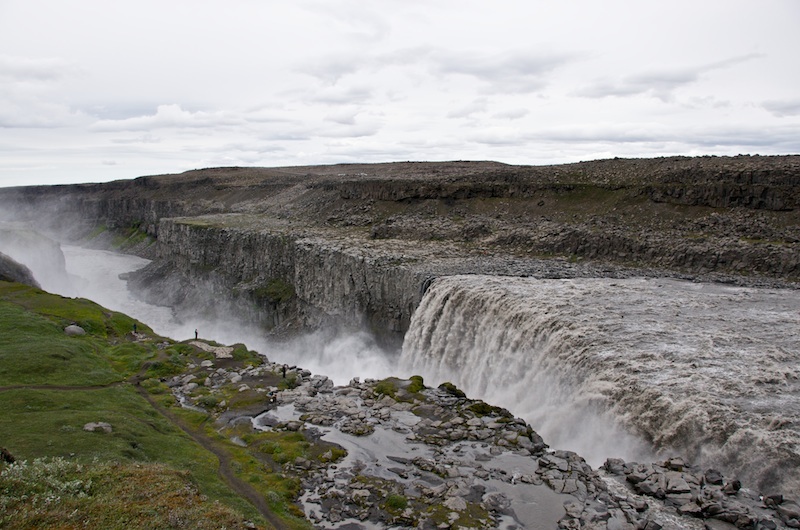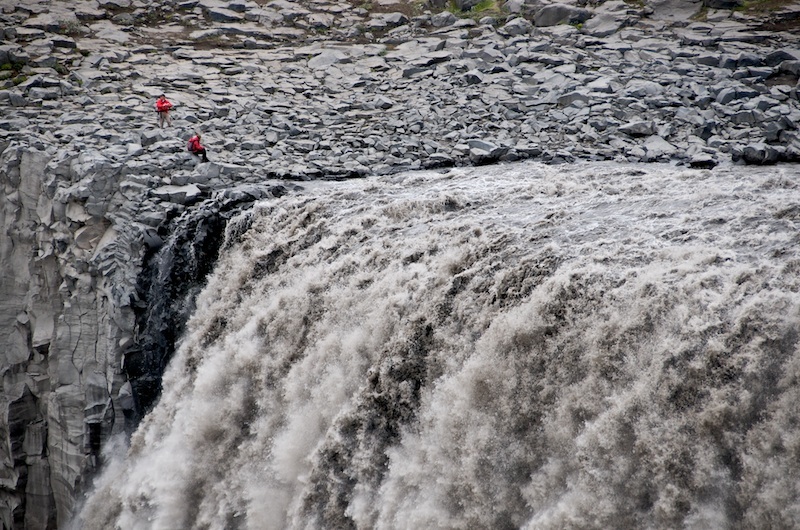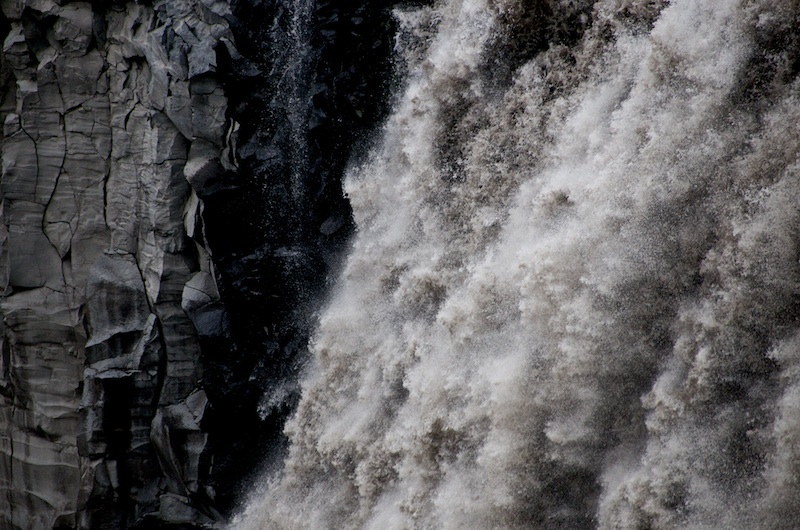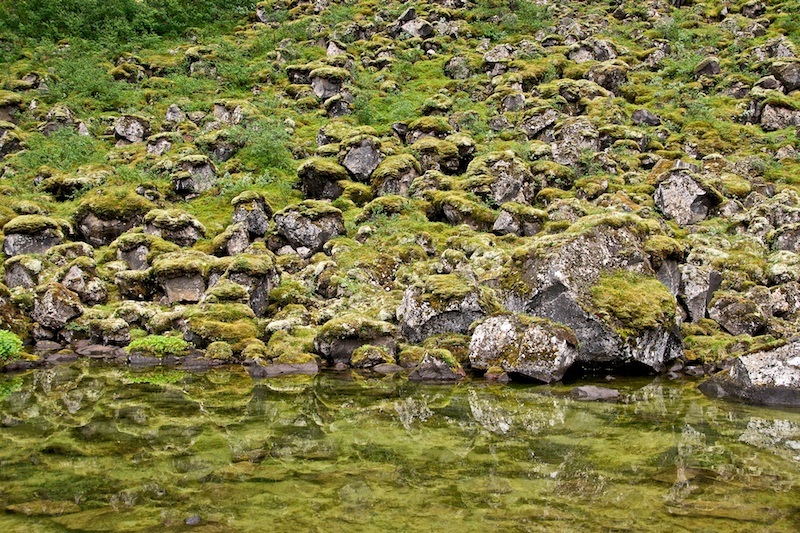Water
IcelandIt tumbles down hillsides and cliffs in great torrents. It seeps and erupts from the ground steaming mad. It falls from the sky casually and with indifference. It houses the cod, the salmon, the whale. It is impossible to ignore how important water is to Iceland.
Our plane descended through heavy clouds upon arriving in Iceland. After gathering our bike boxes and duffle bags, we exited the terminal and stepped into our first Icelandic shower, a light but persistent drizzle. We set up our tent that afternoon under the same conditions, leading us to consider if we hadn’t made a mistake coming to Iceland. We had 37 days to go. Would we be growing gills during our stay? Would our steel bikes rust into oblivion between our legs? Would we ever see the sun again?
Day two in Iceland didn’t promise to be much better. We packed away our wet tent and headed off in a drizzle. On top of that, our route from town led us straight into the wind. At this point though we were still on a high from minimal sleep, jet lag and that feeling of euphoria that only comes when you finally realize that you’re free to pedal wherever you please.
Freedom is all well and good, but what really kept us going in the belly of foul weather was our destination. We were headed to one of Iceland’s national treasures, the Blue Lagoon, which has nothing to do with Brooke Shields and palm trees. The lagoon is really a giant, man-made luxury swimming hole that is filled with hot wastewater from the nearby geothermal plant. The plant not only warms souls in its wastewater, it also produces electricity for the country.
Carrie and I had a wonderful soak that afternoon, quickly learning how pleasant warm water is for making a blustery day on the bike perfectly enjoyable. During the rest of our trip we visited several public swimming pools that appear in even the tiniest townships. Swimming is Iceland’s number one activity for a reason. Without hot water the country would have never been settled.
Hot water was not the only source of joy during our stay. There was plenty of the regular cold stuff around too. In fact it’s safe to say that the route we took around the island was determined by water. Waterfalls, geysers, glaciers, lakes, fjords, rivers: Iceland’s water is its source of power and its source of beauty. The tourist destinations are a list of liquid landmarks. And that’s not even including the gorgeous coastline, which is home to almost all Icelanders because of its arable land and obvious proximity to the Atlantic Ocean, where Iceland earns its living.
Nearly every town or village is built near water. The fishing industry is Iceland’s economic backbone. When riding through the larger towns, it’s inevitable that the wind will carry with it the distinct scent of fish flesh.
Despite the abundance of water in Iceland, we only rode in the rain on five days, and only on one of those days was it uncomfortable. There was a 60km stretch through a portion of Icelandic wasteland called the Sandur where, in rain and a healthy headwind, we had no place to stop to eat or to take shelter. When we arrived on the other side our bodies were stiff and our movements slow. But that was the worst of it.
Although we may have been cursing the water then, all we needed was a short hike to a beautiful waterfall to warm us up and to reaffirm our belief that, without water, Iceland would be nothing but a windy wasteland.
